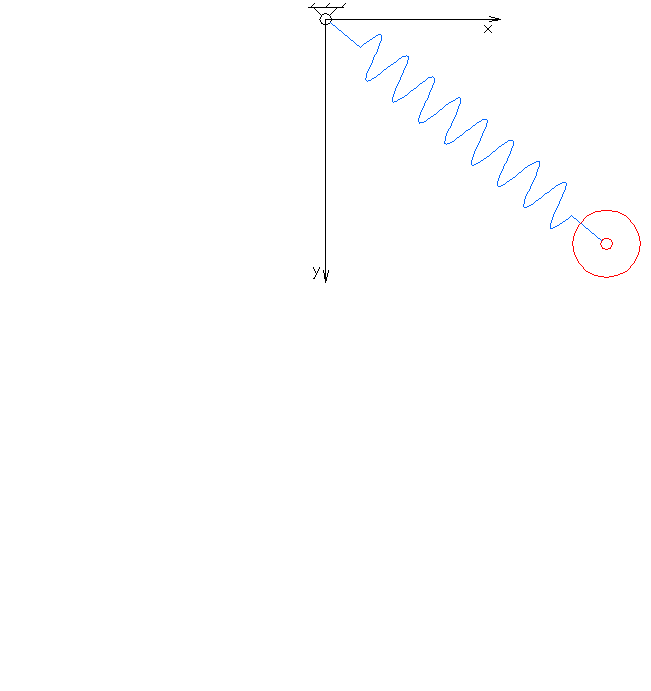Path: blob/master/exams/Examen_2018_2_03_solucion.ipynb
934 views
Kernel: Python 3
In [3]:
Out[3]:
Populating the interactive namespace from numpy and matplotlib
Elastic pendulum

The spring has the rest length and can be stretched to length . The angle of oscillation of the pendulum is .
The equations of motion are and
We can define
Haciendo
Podemos obtener
In [ ]:
1. Coordenadas x, y del movimiento
In [8]:
Out[8]:
2. Espacio de configuraciones
In [7]:
Out[7]:
In [ ]: